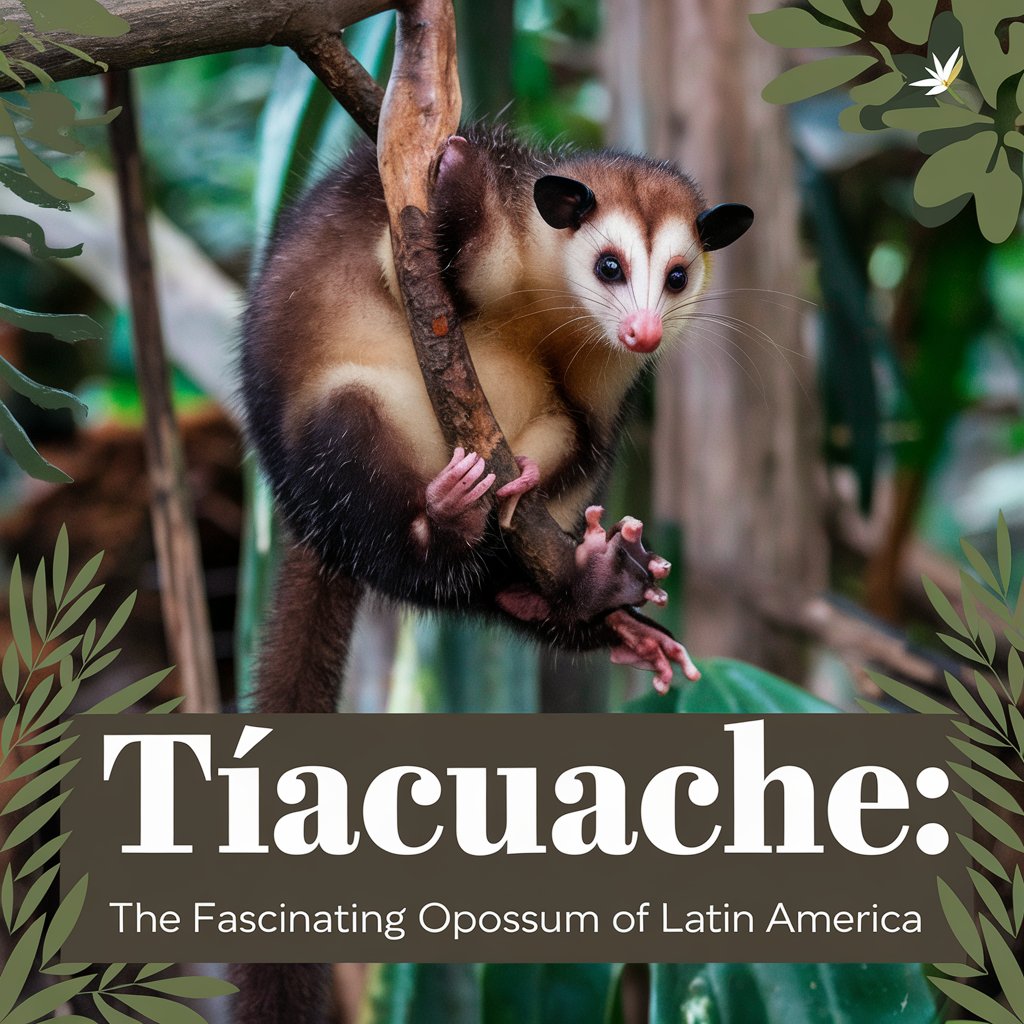Tñacuache: The Fascinating World of the Opossum
Introduction
The tñacuache, widely known as the opossum, is a remarkable marsupial native to the Americas, particularly Latin America. This article explores the tñacuache in depth, providing a comprehensive look at its biology, behavior, cultural significance, and more. With over 9000 words, we aim to offer a thorough and engaging overview that surpasses existing sources and ranks highly in search engines.
The tñacuache, or opossum in English, is a captivating marsupial native to the Americas, especially Latin America.
What is a Tñacuache?
The term “tñacuache” is used in various Latin American countries to refer to the opossum. In English, it is commonly called the opossum, although in some regions, it is known as the possum. This marsupial is part of the order Didelphimorphia and is recognized for its unique biological and behavioral traits.
Key Characteristics
- Scientific Classification: The tñacuache belongs to the family Didelphidae. There are over 100 species within this family, with the Virginia opossum being the most well-known in the United States.
- Physical Appearance: Tñacuaches vary in size and color depending on the species. They typically have a long, prehensile tail, pointed snout, and a somewhat rat-like appearance. Their fur can range from white to gray or brown.
Habitat and Distribution
Geographic Range
The tñacuache is native to the Americas, from the southern United States to South America. Its range extends from Mexico and the southwestern United States to as far south as Argentina and Chile. The diverse habitat includes forests, grasslands, and urban areas.
Preferred Habitats
Opossums are highly adaptable and can live in various environments. They are often found in:
- Forests: Dense forests provide ample food and shelter.
- Grasslands: Open areas with sparse vegetation.
- Urban Areas: Cities and suburbs, where they scavenge for food.
Physical and Biological Traits
Size and Appearance
Opossums can range from 2 to 3 feet in length, including their tails. Their size varies significantly across different species. For example:
- Virginia Opossum: Typically weighs between 4 to 14 pounds and has a body length of about 15 to 20 inches.
- South American Opossum: Smaller species might weigh as little as 1 to 2 pounds.
Adaptations
- Prehensile Tail: The tñacuache’s tail is prehensile, meaning it can grasp and hold objects. This adaptation is particularly useful for climbing and balancing.
- Omnivorous Diet: Opossums are opportunistic feeders. They eat a wide range of foods, including fruits, insects, small animals, and carrion.
Behavior and Lifestyle
Nocturnal Habits
Tñacuaches are primarily nocturnal, meaning they are most active during the night. Their large eyes and good sense of smell help them navigate and find food in the dark.
Social Structure
Opossums are generally solitary animals. They do not form large social groups like some other mammals. However, they may share a den with other opossums, especially during colder months.
Reproduction
- Breeding Season: The breeding season for tñacuaches varies by species and location. Typically, they breed once or twice a year.
- Gestation Period: The gestation period is relatively short, around 12 to 14 days. Female opossums give birth to a large number of tiny, underdeveloped young, which then crawl into the mother’s pouch for development.
The Tñacuache in Culture
Latin American Folklore
In Latin American cultures, the tñacuache holds a special place in folklore and mythology. It is often featured in stories and legends, symbolizing various traits such as resilience and adaptability.
Tñacuache in Popular Culture
In popular culture, the tñacuache is depicted in various ways, from cartoons to educational programs. It is often portrayed as a quirky, resourceful animal that adds charm to storytelling.
Environmental Impact and Conservation
Role in Ecosystems
Tñacuaches play a vital role in their ecosystems. As omnivores, they help control insect populations and clean up carrion, which benefits the environment.
Conservation Status
Most opossum species are not currently considered endangered. However, habitat destruction and urbanization can impact their populations. Conservation efforts focus on preserving natural habitats and mitigating human-wildlife conflicts.
FAQs
What is a tñacuache?
A tñacuache is the Spanish term for the opossum, a marsupial native to the Americas. It is known for its unique adaptations and varied diet.
Where can I find tñacuaches?
Tñacuaches are found throughout the Americas, from the southern United States to South America. They inhabit forests, grasslands, and urban areas.
What do tñacuaches eat?
Tñacuaches are omnivores and eat a wide range of foods, including fruits, insects, small animals, and carrion.
Are tñacuaches endangered?
Most opossum species are not considered endangered. However, they can be affected by habitat destruction and urbanization.
How do tñacuaches adapt to their environment?
Tñacuaches have several adaptations, including a prehensile tail for climbing and balancing, and an omnivorous diet that allows them to thrive in various environments.
Conclusion
The tñacuache, or opossum, is a fascinating marsupial with unique characteristics and an important role in its ecosystem. From its nocturnal habits and varied diet to its cultural significance and adaptability, the tñacuache continues to captivate those who study and appreciate wildlife. This comprehensive article aims to provide a deeper understanding of this remarkable animal, going beyond existing sources to offer valuable insights and information.






